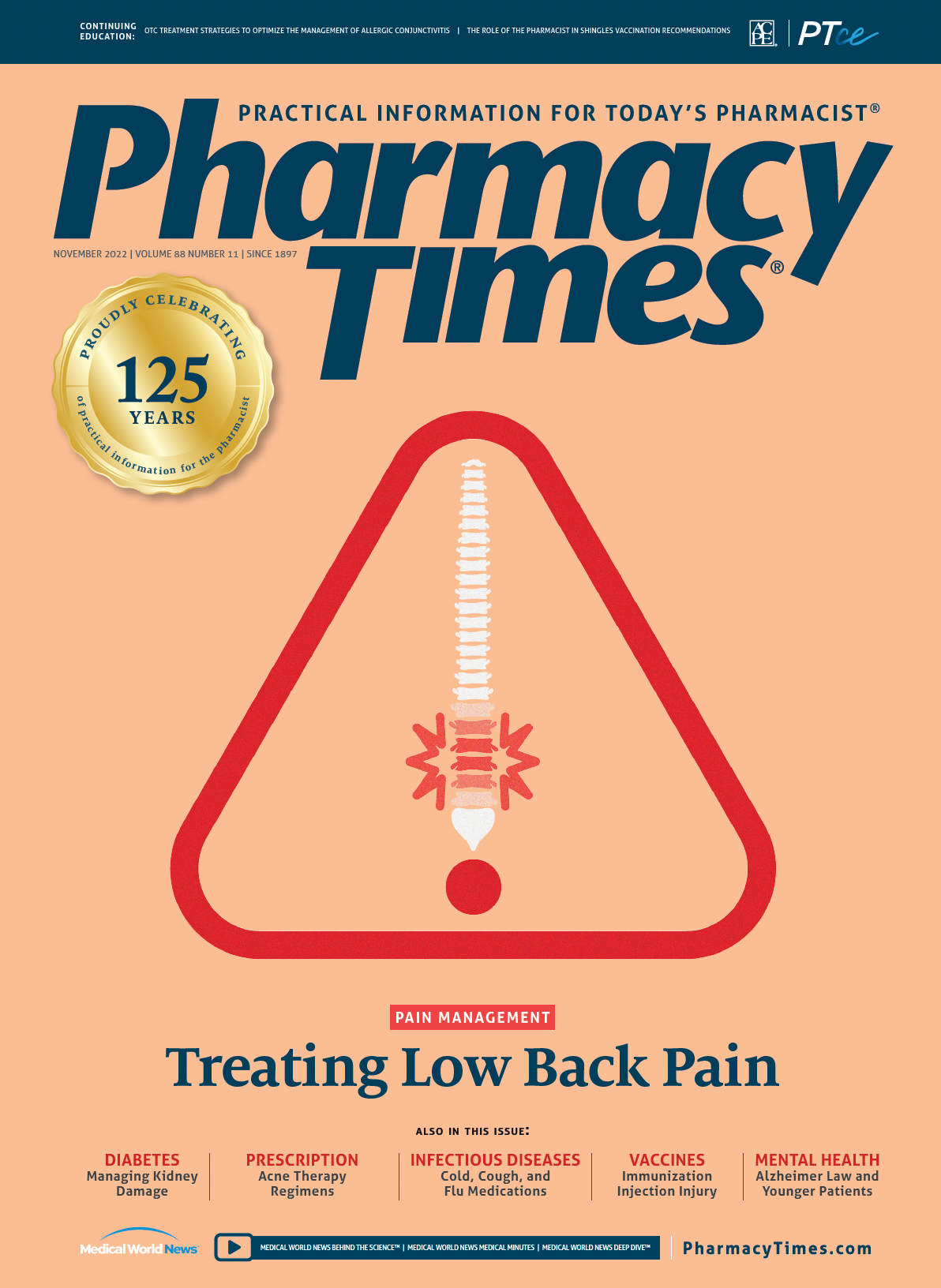Publication
Article
Pharmacy Times
A Dialogues Event by Pharmacist Moms Group Tackles COVID-19 Vaccine Hesitancy
Author(s):
Educating patients while remaining empathetic, sharing personal experiences helps overcome this hurdle.
In a revent dialogues event hosted by Pharmacist Moms Group, participants gathered to discuss reasons for COVID-19 vaccine hesitancy and how pharmacists are making strides to improve vaccination rates. Presenter Michelle Jacobs, PharmD, RPh, CDCES, BCACP, an associate clinical professor at the Northeastern University School of Pharmacy in Boston, Massachusetts, began by emphasizing the gravity of the COVID-19 pandemic.
Not only was COVID-19 the third leading cause of death in 2021, but Jacobs also noted that the disease is on track to be the second, third, or potentially fourth leading cause of death in 2022 and 2023. “We’ve been through a monumental [historic] event, and we’re still in it,” Jacobs said. “We’re just in a different phase of it.”
However, vaccines have been a lifeline during the pandemic. All the COVID-19 vaccines target the spike protein of the SARS-CoV-2 virus, which is what allows the virus to attach and spread. This information was not new, but the messenger RNA (mRNA) technology allowed investigators to essentially use the genetic code for the spike protein and inject that into vaccine recipients. This new technology proved highly effective during the pandemic, according to Jacobs.
Despite early concerns that the public would be more hesitant about the new mRNA vaccines compared with traditional protein approaches, Jacobs said study results have shown that the opposite is true. Surveys of unvaccinated patients have showed that 77% would not consider having a traditional protein-type vaccine.
Additionally, investigators have found that one of the most significant reasons individuals remain unvaccinated is concerns about adverse effects (AEs). “All these studies have really transformed over time, over the pandemic,” Jacobs said.
“The reasons [for vaccine hesitancy] at the beginning of the pandemic [vs] the reasons now have definitely evolved... [Adverse] effects [are] generally always on top of...[an individual’s] hesitancy list.”
The COVID-19 vaccine from Johnson & Johnson (J&J) uses a different technology, and an early advantage of its approach was that it required just 1 shot. However, Jacobs said the FDA significantly narrowed the emergency use authorization for this vaccine earlier in 2022 based on concerns about AEs. Although rare, thrombosis with thrombocytopenia has been associated with J&J’s COVID-19 vaccine.
Pharmacists can be proactive in educating patients about potential AEs of the vaccine, and Jacobs said nonsteroidal anti-inflammatory drugs can help minimize these. Most AEs are mild and include fatigue, general cold symptoms, headaches, and injection site discomfort, Jacobs said.
Young children may express symptoms differently, such as with crying or irritableness, so parents should be advised of this, she said. Anaphylaxis is very rare in all populations.
Jacobs also said she anticipates a lot of advertising from Moderna, Inc, and Pfizer Inc for their newest COVID-19 booster vaccines, adding that pharmacists can take that opportunity to remind patients about other vaccines.
For example, pharmacists can ask patients whether they have received their annual influenza shots while administering their COVID-19 boosters, and they should advise eligible to also receive Shingrix or relevant pneumococcal vaccines.
After providing an overview of the COVID-19 landscape and vaccine updates, Jacobs turned to a discussion of vaccine hesitancy, which she said it is a challenging topic. In 2019, before the COVID-19 pandemic, vaccine hesitancy was listed as a top 10 threat to global health, despite being one of the cheapest and most effective ways to avoid disease, she said.
The pandemic caused some shifts in how the public perceived vaccines, but Jacobs said that one thing has not changed: Individuals who hold extremely negative views about vaccines are still unlikely to be swayed.
“I’m sure we’ve all had personal or professional experiences with that. My first experience was [during] 30 minutes to the airport with an Uber driver,” Jacobs said. “We didn’t come to any agreement, but I tried hard to convince him that his 14-year-old daughter was not going to lose her fertility.”
Despite the inherent challenges, Jacobs said pharmacists play an essential role in these discussions. The CDC recommends motivational interviewing as the best approach for speaking with those who are vaccine hesitant, though she said that method is not for individuals who are passionately opposed to vaccination.
“These skills are [for individuals] who are basically on the fence, not [those] who are very convinced that it’s a hard ‘no,’” Jacobs said. “It’s absolutely encouraged to engage in a conversation and try to [incorporate] motivational interviewing during a patient visit to try to see where somebody is and to see [whether] you can help fill some holes to take them to a different place.”
Key tips for such conversations are to be empathetic, not be too forceful, and to ask permission before broaching the subject.
Asking patients to rate their openness to a vaccine on a scale of 1 to 10 may also help pharmacists gauge their willingness.
Finally, Jacobs said sharing personal experiences can be especially impactful. “[Individuals] have waited and [seen] what has happened and said, ‘I think the [adverse] effects are a big deal,’ and I totally get it, because I have my own personal experience and I share it,” she said. “Sharing your own personal experience with someone is powerful. If they can relate to you, understand what you’ve been through, and know how you dealt with it, [then] I think they’re more likely to be able to see themselves moving forward.”

Newsletter
Stay informed on drug updates, treatment guidelines, and pharmacy practice trends—subscribe to Pharmacy Times for weekly clinical insights.






